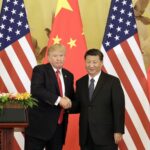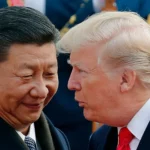China’s Strategic Advantages: From Military Innovation to Economic Power

China’s ascent to global superpower status is supported by a array of strategic advantages that encompass military innovation, economic influence, and technological dominance. These factors collectively serve as China’s “secret weapons” in the international arena.
Military Innovation and Asymmetrical Warfare
A key aspect of China’s strategic advantage lies in its focus on asymmetrical warfare and anti-access/area denial (A2/AD) capabilities. This strategy is encapsulated in the concept of the “assassin’s mace” (杀手锏), a term derived from ancient Chinese folklore that refers to a secret weapon used to defeat a stronger adversary. In a contemporary military context, this involves developing advanced weapons systems to counter superior forces, such as the United States. Notable examples include:
- Hypersonic Weapons: China has achieved significant progress in developing hypersonic missiles, which travel at speeds exceeding Mach 5 and are designed to bypass existing missile defense systems.
- Anti-Ship Ballistic Missiles (ASBMs): Weapons such as the DF-21D are capable of targeting aircraft carriers and other large ships, posing a substantial threat to U.S. naval dominance in the Pacific.
- Submarine Forces: China’s submarine fleet, including its nuclear-powered submarines, enhances its A2/AD capabilities by threatening enemy surface ships and submarines.
Economic Power and Trade Strategies
China’s economic influence is another critical advantage. As the world’s second-largest economy, China leverages its economic power to shape global trade and politics. Key strategies include:
- Trade War Tactics: During trade disputes, China has used retaliatory tariffs and the strategic use of its extensive holdings in U.S. Treasury securities to apply economic pressure.
- Gig Economy and Job Creation: China’s gig economy has been a vital tool in maintaining employment during trade wars, with millions of workers engaged in the production of goods for international markets.
- Infrastructure Investments: Through initiatives like the Belt and Road Initiative, China makes substantial investments in infrastructure projects across Asia, Africa, and Europe, expanding its economic influence and creating dependencies that align with its geopolitical objectives.
Technological Dominance
China’s investments in technology, particularly in areas such as artificial intelligence (AI), robotics, and cyber warfare, provide it with a significant competitive edge:
- AI and Robotics: China is a global leader in the deployment of industrial robots and AI-driven manufacturing processes, which enhance productivity and reduce labor costs.
- Cyber Warfare: China’s cyber capabilities are advanced and diverse, including espionage, disruption, and influence operations. Chinese hacking groups have been active in stealing trade secrets and intellectual property from Western companies.
- EV Batteries and Smart Technologies: China’s dominance in the production of electric vehicle (EV) batteries and smart technologies poses a potential challenge to U.S. infrastructure and security, as these technologies become increasingly integrated into daily life and critical infrastructure.
Biological and Genetic Enhancements
China is also at the forefront of biological and genetic research, with potential military applications:
- Tardigrade DNA: China has initiated experiments merging human stem cells with tardigrade DNA, with the goal of creating biologically enhanced soldiers with heightened resilience and survival capabilities.
Conclusion
China’s secret weapons are diverse, ranging from advanced military technologies and economic leverage to technological innovation and biological research. These advantages position China as a powerful global actor, capable of challenging the United States and other major powers across various domains. As China continues to invest in these areas, its influence and power are set to grow, significantly reshaping the global landscape.

















